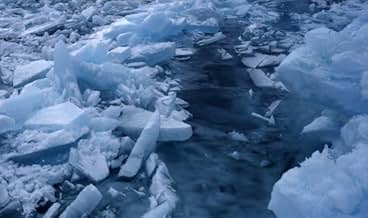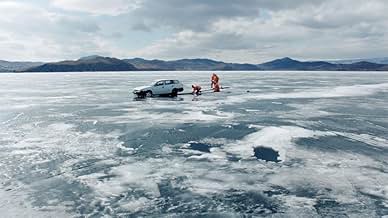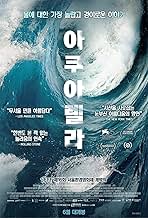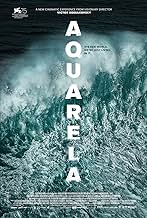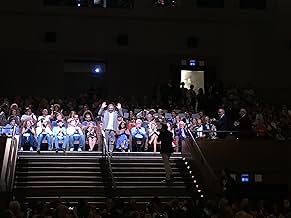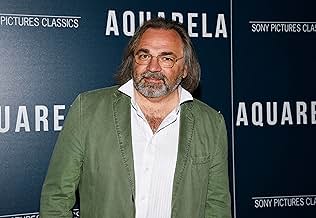IMDb RATING
6.6/10
1.7K
YOUR RATING
Water and ice are shown around the world, in all of their many powerful forms.Water and ice are shown around the world, in all of their many powerful forms.Water and ice are shown around the world, in all of their many powerful forms.
- Director
- Writers
- Awards
- 1 win & 13 nominations
Storyline
Did you know
- TriviaThe Composer Eicca Toppinen is the main man of Finnish cello-metal band Apocalyptica, and is also a talented composer and producer.
- ConnectionsReferenced in Evening Urgant: Feduk/Sharlot (2019)
Featured review
Greetings again from the darkness. This is not your father's Nature documentary. It's more like Mother Nature giving us a glimpse at her most beautiful, peaceful, ferocious and terrifying self. And it's just water. Simple H2O. Only it's not so simple. In fact, water takes many forms, and Russian filmmaker Victor Kossakovsky serves up some stunning water photography from around the globe.
The film begins with a rescue team working frantically to pull out a car that has fallen through the ice. When the camera finally does pull back, we see the vast space of the lake covered in ice. Other cars speed across the frozen body of water as if it's a sport or thrill for the driver. When another mishap occurs, we realize the tragedy is blamed on ice that has melted "3 weeks" earlier than usual. So we brace ourselves for another lecture on climate change.
It's a lecture that never comes. Surprisingly, there is no narrator. Perhaps Morgan Freeman signed a non-compete with the penguins. Kossakovsky allows the camera and nature to show the story, albeit with periodic musical accompaniment from composer Eicca Toppinen - sometimes with heavy metal chords, sometimes with soothing strings. Filmed in Greenland, Venezuela, Siberia (Lake Baikal), and Miami, Florida, where we see the effect of Hurricane Irma, water is shown in its glory. At times peaceful, at times violent. A sailboat captain fighting a storm might be followed by a breath-taking waterfall, which might be followed by a flooded town ... and even a swimming horse is photographed underwater.
Waves, glaciers, whales and dolphins combine for an unusual cinematic experience, and the most staggering sound comes courtesy of the ice moaning and water running. It's one best enjoyed with theatre screen and sound, and a film that will likely lose something even on the finest home systems. Filmed at 94 frames per second (rather than industry norm of 24 or 48), the visuals are truly breathtaking ... and sometimes disorienting. As George (on "Seinfeld") once said, "The sea was angry that day, my friend"; and now we have witnessed the anger for ourselves.
The film begins with a rescue team working frantically to pull out a car that has fallen through the ice. When the camera finally does pull back, we see the vast space of the lake covered in ice. Other cars speed across the frozen body of water as if it's a sport or thrill for the driver. When another mishap occurs, we realize the tragedy is blamed on ice that has melted "3 weeks" earlier than usual. So we brace ourselves for another lecture on climate change.
It's a lecture that never comes. Surprisingly, there is no narrator. Perhaps Morgan Freeman signed a non-compete with the penguins. Kossakovsky allows the camera and nature to show the story, albeit with periodic musical accompaniment from composer Eicca Toppinen - sometimes with heavy metal chords, sometimes with soothing strings. Filmed in Greenland, Venezuela, Siberia (Lake Baikal), and Miami, Florida, where we see the effect of Hurricane Irma, water is shown in its glory. At times peaceful, at times violent. A sailboat captain fighting a storm might be followed by a breath-taking waterfall, which might be followed by a flooded town ... and even a swimming horse is photographed underwater.
Waves, glaciers, whales and dolphins combine for an unusual cinematic experience, and the most staggering sound comes courtesy of the ice moaning and water running. It's one best enjoyed with theatre screen and sound, and a film that will likely lose something even on the finest home systems. Filmed at 94 frames per second (rather than industry norm of 24 or 48), the visuals are truly breathtaking ... and sometimes disorienting. As George (on "Seinfeld") once said, "The sea was angry that day, my friend"; and now we have witnessed the anger for ourselves.
- ferguson-6
- Aug 28, 2019
- Permalink
- How long is Aquarela?Powered by Alexa
Details
- Release date
- Countries of origin
- Official site
- Languages
- Also known as
- 水視界
- Filming locations
- Production companies
- See more company credits at IMDbPro
Box office
- Gross US & Canada
- $307,346
- Opening weekend US & Canada
- $24,753
- Aug 18, 2019
- Gross worldwide
- $638,907
- Runtime1 hour 30 minutes
- Color
- Sound mix
- Aspect ratio
- 2.35 : 1
Contribute to this page
Suggest an edit or add missing content





